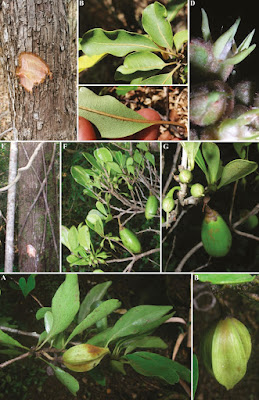Abstract
Capurodendron is the second largest endemic genus of vascular plants in Madagascar. It comprises mainly trees that are frequently logged for their valued wood. This, together with deforestation, led to 76% of the known species being Endangered or Critically Endangered. However, a confident species identification is often not possible with the current available literature and many morphotypes do not fit any described taxa, which has impeded the implementation of conservation measures. We performed a phylogenomic revision studying c. 900 collections morphologically, and sequencing 638 nuclear genetic markers of 180 representative specimens up to 90 years old, including all the described species and some undescribed morphotypes. Our results show that Capurodendron may contain up to 21 undescribed species in addition to the 35 already known. Nine of these are confirmed as valid species supported by genetic, morphological, and ecological data, and we describe them here (Capurodendron ainae, C. ambanizanense, C. antilahimenae, C. christeae, C. nataliae, C. ratovosonii, C. razakamalalae, C. sommerae, and C. vulcanicola). For the remaining 12 candidate new species, three are genetically analysed but require more sampling, and nine are only supported by morphological and ecological data so far, and therefore require genetic analyses to confirm their validity. For practical purposes and to assist with conservation assessments we provide an identification key, based mainly on vegetative characters, that also include the undescribed species.
conservation assessments, endangered species, gene capture, Madagascar, precious timbers, target capture
Carlos G. Boluda, Yamama Naciri and Laurent Gautier. 2024. A Phylogenomic Reconstruction of the Endangered Malagasy Tree Genus Capurodendron (Sapotaceae) with Nine New Species and an Identification Key. Botanical Journal of the Linnean Society. 205(2); 85–115, DOI: 10.1093/botlinnean/boad073


